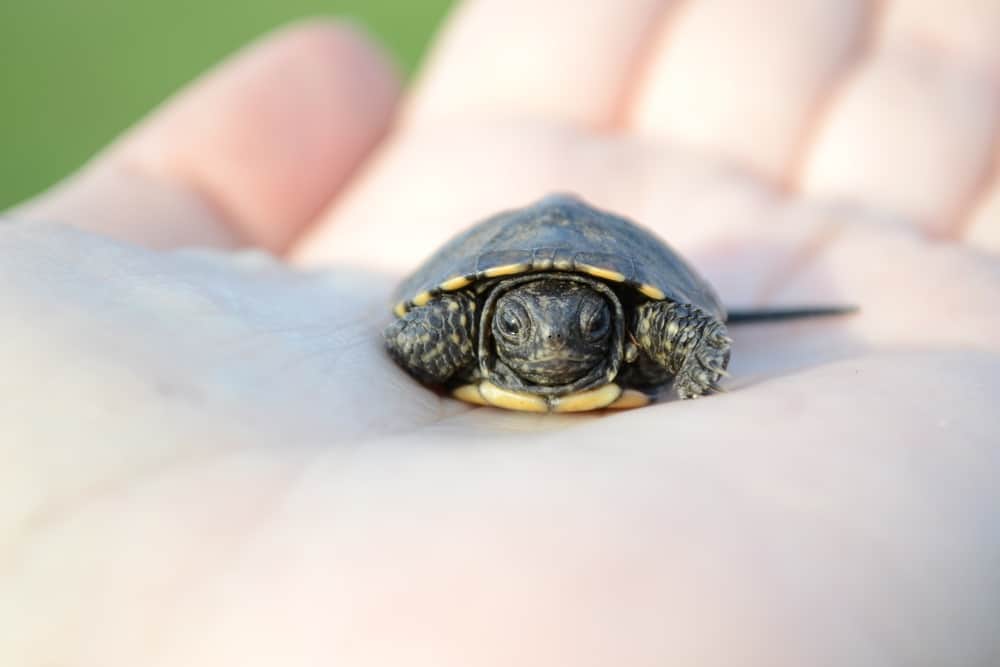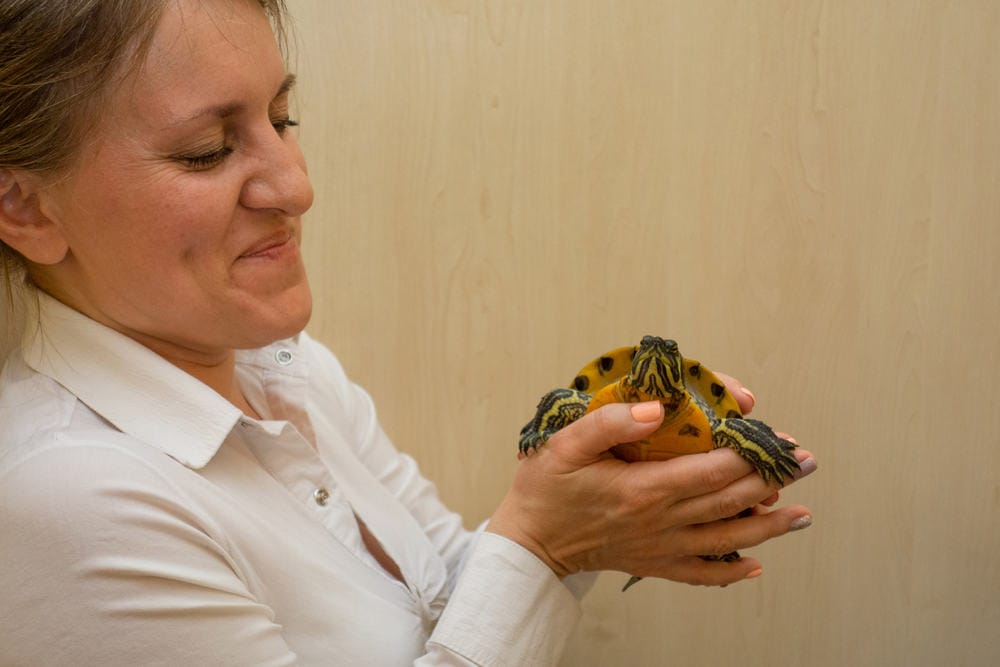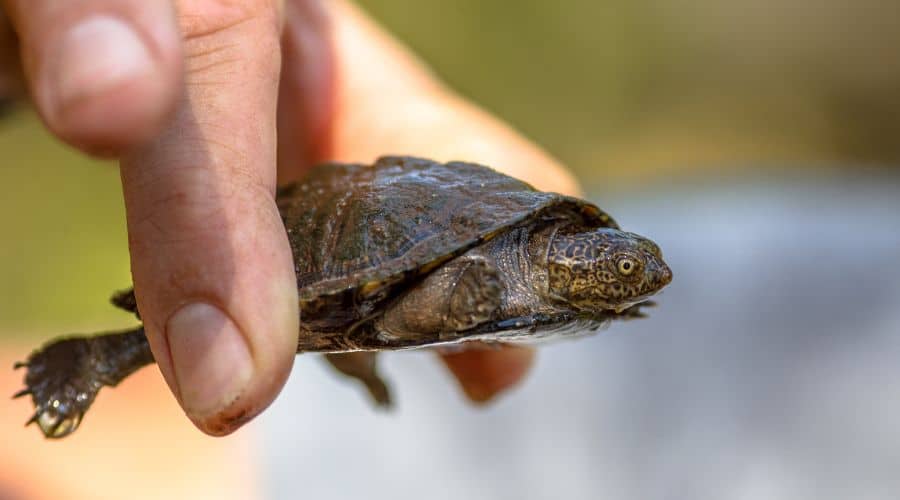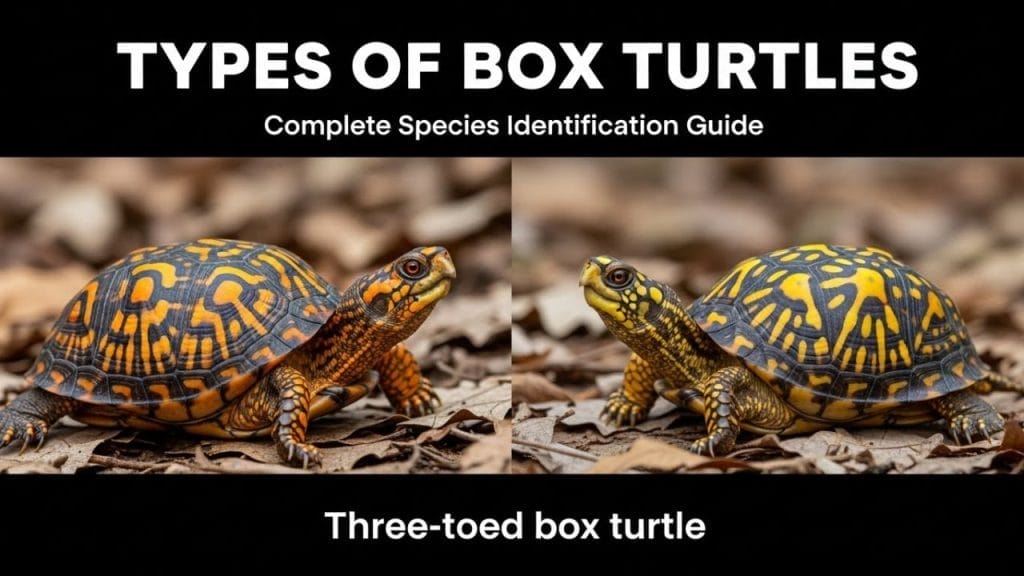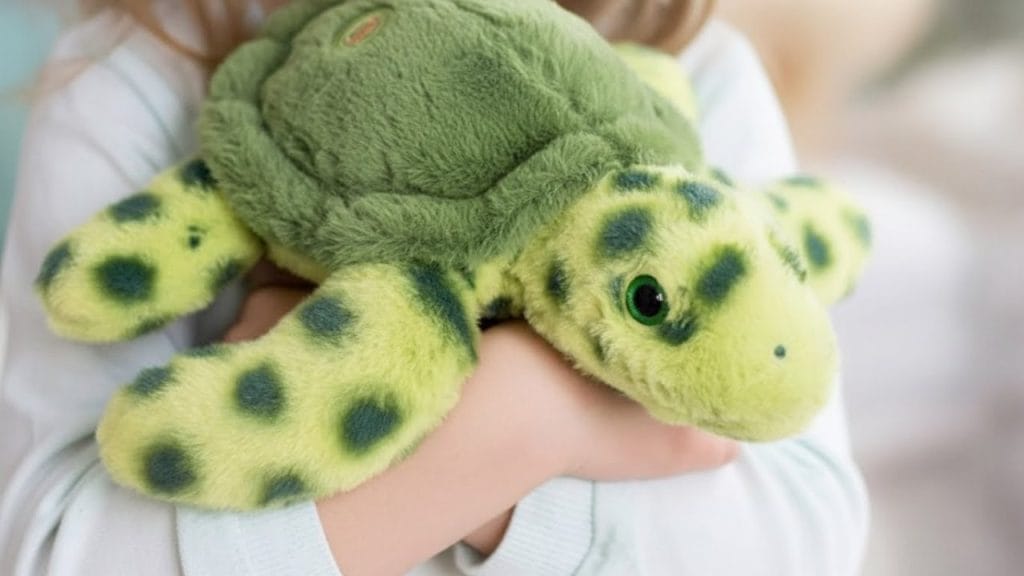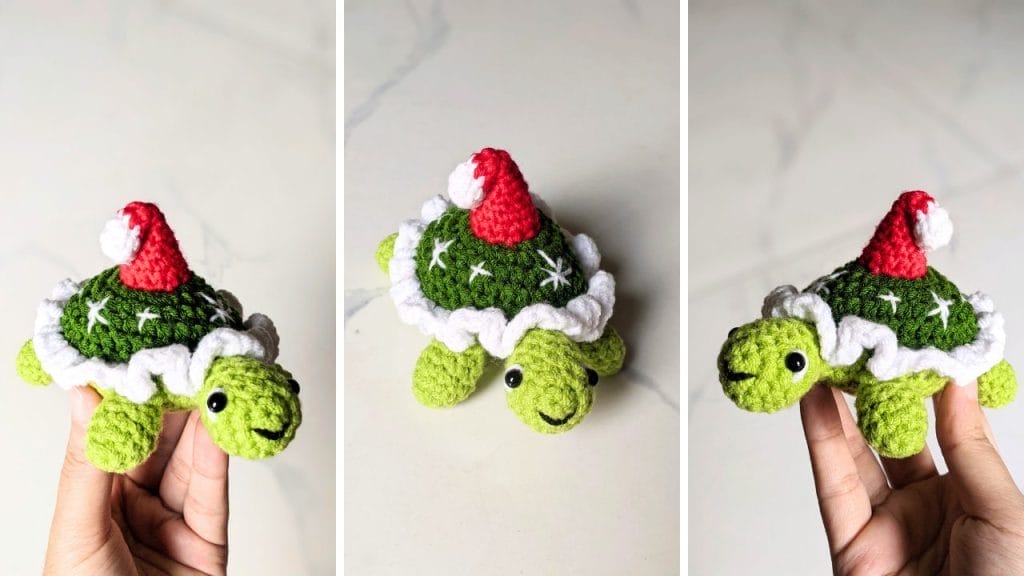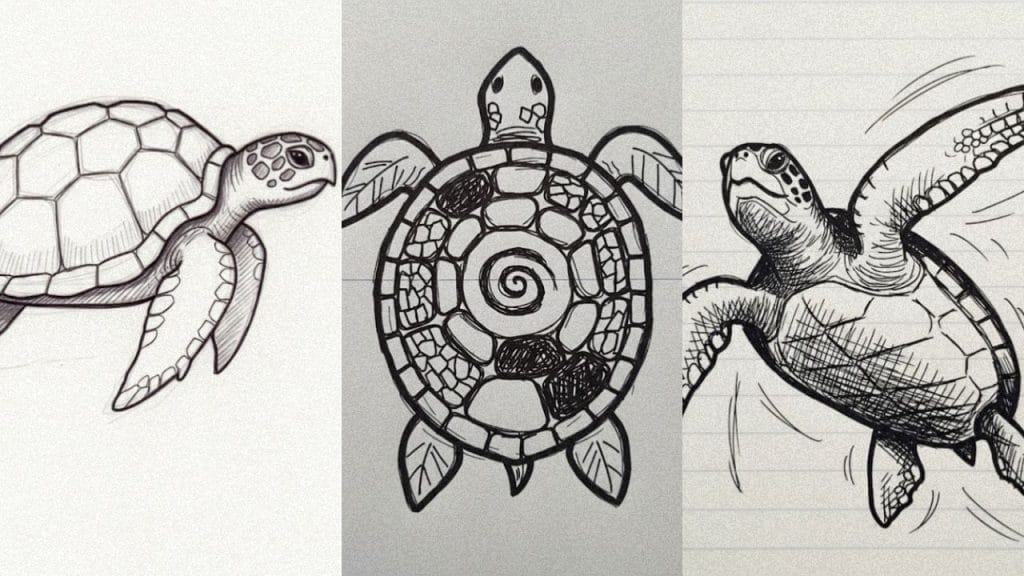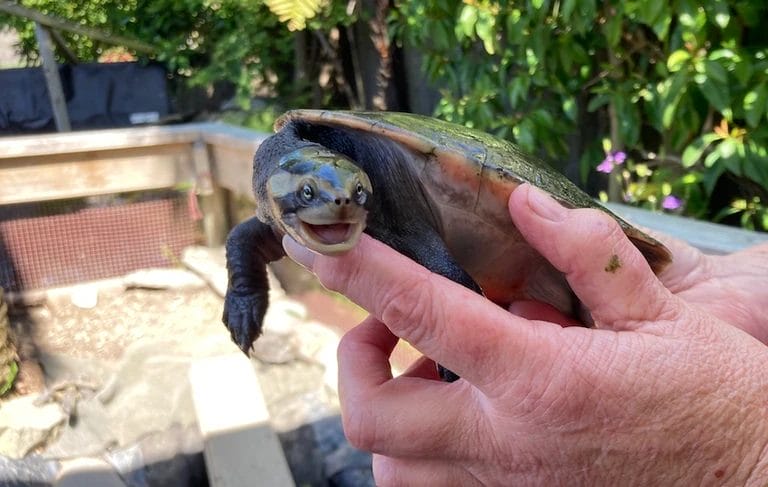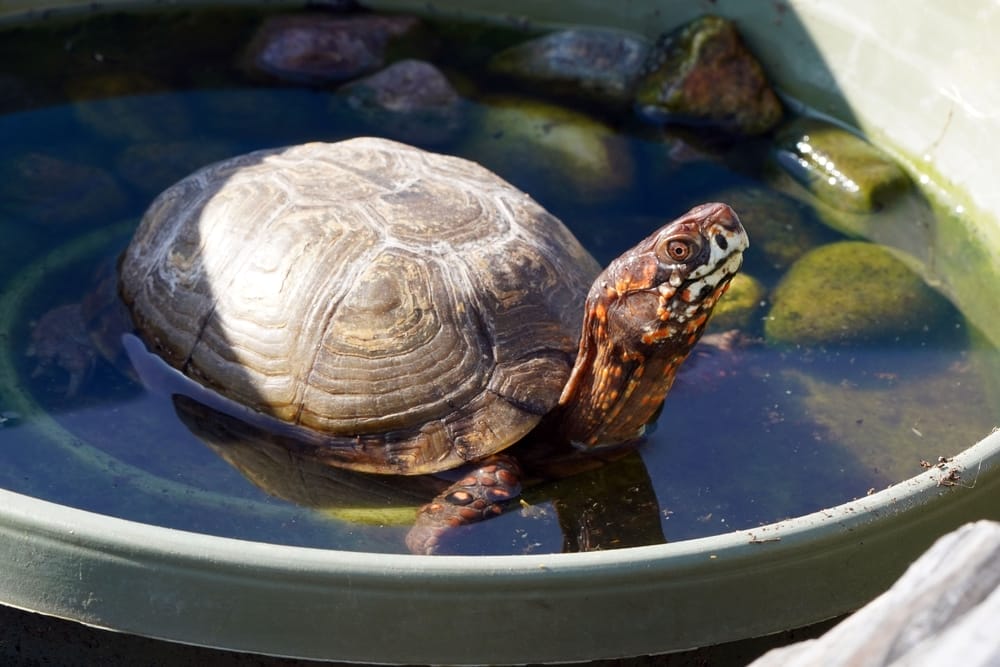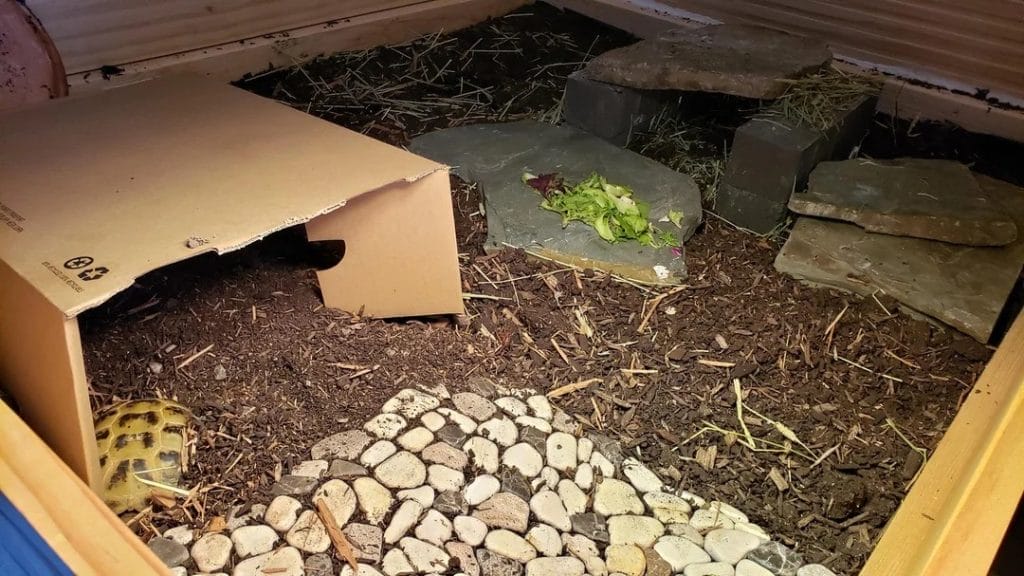How To Socialize Your Turtle: 5 Steps To A Friendlier Pet
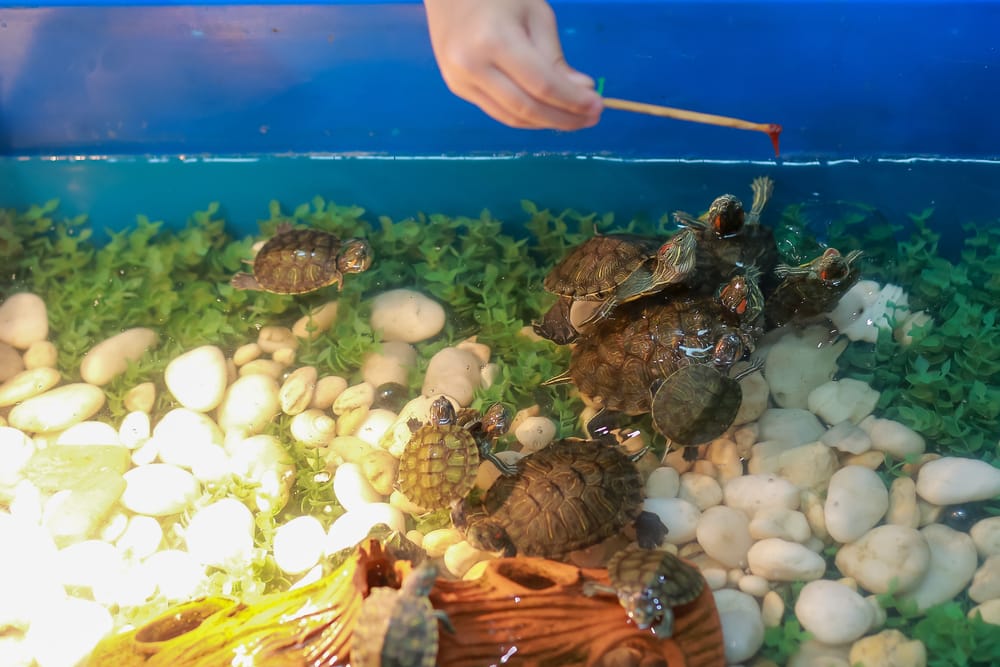
This post was created with help from AI tools and carefully reviewed by a human (Muntaseer Rahman). For more on how we use AI on this site, check out our Editorial Policy.
If caring for a turtle is hard, wait until you try to befriend one. Yes, turtles can give you a tough time while interacting. They are just not a big of human affection. That doesn’t mean you should stop befriending your pet turtle.
Set up a spacious tank with many hiding spots and a sturdy basking dock. Learn how to pet them gently. And, finally, reward them for friendly behaviors.
You see, a healthy and safe turtle is way easier to impress. But it’s only the first step. The socializing process can be pretty lengthy. And I am going to show you all those steps in this article. So, keep reading.
Key Takeaways
- Turtles are not as expressive as dogs or cats when showing affection.
- You can socialize with a turtle, but it usually takes a long time.
- Playing with turtles is the best way to bond with them.
- Turtles can refuse to be friendly if they are in stress.
- Never pick up the turtle from behind.
- Hand-feed your turtle regularly to form a bond quickly.
Do Turtles Make Friendly Pets?
To be frank, turtles are not the friendliest animals. But people still want them as pets, assuming they are low maintenance. Their calm and shy nature makes them a favorite among peace-loving people.
Of course, turtles are way less needy than a golden retriever. You don’t have to play with them for hours, go on walks, give them constant attention, etc.
But I still think caring for dogs is easier. Because you get a reward in exchange for your care, they will show you immense affection. Just them running towards the door to greet you every day is worth all the trouble for most dog parents.
This emotional quotient is missing when you raise a turtle. That means they never make their affection visible. So, you are doing all the work for them without expecting anything in return.
That’s why I believe taking care of turtles is more challenging sometimes. And I don’t recommend adopting turtles unless you are genuinely interested in the species.
What many people do is take care of a turtle hatchling for several years, only to leave them on a beach if they get bored. That’s a horrible thing to do. Keeping the turtle in captivity reduces its ability to hunt prey and defend itself against predators.
So, the turtle is on its own until it dies due to not knowing how to survive.
If you want turtles, ensure that you can keep them till they die. Because they usually live up to 30 to 40 years easily. It’s no joke taking care of an animal that has a lifespan close to humans. Keeping these warnings aside, a turtle can be friendly if you are willing to be consistent and patient.
As I said before, they are not the friendliest pets, but if they trust you enough, they won’t mind interacting with you every now & then.
This Hilarious Turtle Book Might Know Your Pet Better Than You Do
Let’s be real—most turtle care guides feel like reading a textbook written by a sleep-deprived zookeeper.
This one’s not that.
Told from the snarky point of view of a grumpy, judgmental turtle, 21 Turtle Truths You’ll Never Read in a Care Guide is packed with sarcasm, sass, and surprisingly useful insights.
And hey—you don’t have to commit to the whole thing just yet.
Grab 2 free truths from the ebook and get a taste of what your turtle really thinks about your setup, your food choices, and that weird plastic palm tree.
It’s funny, it’s honest, and if you’ve ever owned a turtle who glares at you like you’re the problem—you’ll feel seen.
How Can I Socialize With My Pet Turtle?
1. Know What Triggers Stress In Them
Understanding your pet (any type of animal) is the key to having a solid bond. You may love them a lot. But it’s also important to know what they love, especially what they don’t.
Usually, the common reason behind a sad and grumpy turtle is the stress level. If the home environment is not suitable for the particular turtle species, they might always live on high alert. The stress and anxiety are actually what makes them “Unfriendly.”
So, socializing begins before you have even petted your turtle for the first time. Learn about the specific species. What type of water do they like?
For example, a Fly River Turtle usually loves having minerals in water (hard water.) Their natural habitat (African rivers) is typically laid upon a limestone base. However, you can’t keep a red-eared slider inside the same hard water tank.
They are freshwater turtles. Messing up these small details can cause severe stress to those tiny reptiles.
Apart from water quality, some other causes of stress are poor husbandry, fluctuation in temperature, pH swings, harmful chemical build-up (ammonia, nitrate, phosphate), etc. The ideal water temperature for a turtle tank is 72 to 77 degrees Fahrenheit.
If the tank had a consistent temperature of 72 degrees Fahrenheit and suddenly rose to 5 degrees Fahrenheit overnight, the turtle would panic. The same goes for pH levels and chemical imbalances.
If you noticed, all of the causes are invisible. The only way to know your turtle is unhappy is by learning about them more deeply.
2. Provide A Safe Habitat
After checking all the factors that stress a turtle out, it’s time to create a safe home for them. If the turtle feels like you are hurting it by keeping it captive, forget socializing.
So, what can you do to make it feel safe and at home?
Basking Time Is Happy Time
I guess it needs no explaining why basking is super essential for turtles. They thrive when in contact with direct sunlight. Reportedly, the more time pet turtles get for basking, the lower their stress/anxiety level.
That means that to befriend a turtle, you must ensure a dry basking platform inside or above the tank. You can order an affordable basking dock made of synthetic foam from Amazon.
Or, you can get a basking hub or log specially designed for the best basking experience. It’s up to you.
But I suggest spending some money on a high-quality basking dock as it determines the turtle’s mood. Since aquatic turtles stay inside water most of the time, you will only have the basking time to socialize.
So, the happier they are on the dry dock, the better your chances of befriending them. Hope you get the point.
Harmonious Community Structure
Many people find nothing wrong with keeping aquatic pets in one tank or pond. But if you ever talk with experts, they will tell you how traumatizing it can be for turtles.
There are reports of turtles forcing themselves into hibernation due to the threat of an enemy inside the tank. The animosity can form within two turtles as well.
Understanding your turtle’s temperament before introducing it to the pet community is important. Usually, once the reptile is confident in your care, it doesn’t mind sharing the tank.
But if it still doesn’t like or trust you enough, there’s a high chance they will be shocked by the new change within the tank’s society.
No matter how calm they look, turtles can be highly territorial. Other male turtles can cause them to fight each other and create chaos in the water.
So, notice how the turtle reacts to new tank mates.
More Space Equals More Fun
Finally, the most critical aspect of a safe home is its size. How big is your turtle tank? Prepare yourself for the question anytime you discuss any turtle issue with a fellow enthusiast.
No matter how nicely you plan everything, turtles don’t like congested spaces. Unlike fish, they remember every part of the tank.
That means they will easily catch the size limitation. Needless to say, a bored and unimpressed turtle won’t be easy to socialize with.
Depending on size, I highly suggest transferring your turtle to a bigger tank.
A 75 to 100-gallon tank is normally fine for an average juvenile. Apart from the suffocation issue, a spacious tank is also great for decoration. You can try keeping different objects for your turtles to investigate and stay occupied.
According to experts, a bottom layer filled with sand /pebbles/gravel, random wooden logs, rocks, and plants is a great organic toy for turtles. They dig inside the sand, look around the plants, and hide behind the logs.
These are all different types of plays. Knowing your turtle is enjoying itself is the best relief as a turtle keeper. Think of it like this: they like your arrangements and will soon like and interact with you.
3. Don’t Pet Them Too Much
Poor handling/husbandry will only make your turtle despise you. Unlike other animals, turtles are extremely sensitive about how you touch them. One wrong move, and they will start hiding from you. This also is the first stage of interaction.
However, a new turtle will not like being pet by you so fast. Sometimes, it takes months to gain a turtle’s trust. However, trying to speed up the process never helps. I
f you try petting them several times a day despite knowing they hate it, you might end up getting bitten. So, be aware of that risk.
Here are the correct ways to approach a turtle as your first socializing effort.
Let The Turtle See You
Approach the turtle face to face. It should notice you before you touch the shell. Picking it up from behind can startle the poor animal. Considering turtles don’t have a very flexible bodies, they would panic vigorously. The correct way is to make yourself familiar with the pet.
Make sure to stand in front of them and offer food. After doing that for a while, try touching the turtle from the front. If they are calm under your touch, congratulations. If not, don’t be disheartened. We still have lots of other ways.
Pet The Turtle On Its Head & Neck
At the initial stage of socializing, you must not pet the turtle on its shell. Turtles are rather protective of their shells. They can literally die due to shell damage. That’s why it’s better to leave that part alone.
Instead, touch its head with your thumb. Run the finger across its head to the neck. Who doesn’t love a good massage?
Provide Support Under The Plastron
Don’t ever pick up the turtle only by its shell. It’s possible to do so when they are tiny in size (like 4 inches).
But it’s highly stressful for them. One small slip of the hand, and they will be on the ground with broken bones.
No doubt, your turtles will throw their hands and legs at you if you try to mishandle it in such a cruel manner.
To make the turtle-like you, make them feel extremely safe while carrying. For example, place your palm under their plastrons. You can easily pick them up this way without touching the shells.
Pay Attention To Their Responses
Many ask how to know whether they are hurting their turtles while iterating. My answer is to just pay attention to their reactions. It’s not a good idea to continue interactions if your turtle doesn’t want to.
For that, just rub the head a little. Does the turtle hide under its shell right away? Well, that’s a NO sign. It doesn’t want to be bothered right now. Or, if it’s a snapping turtle, you will see it opening its mouth. No, it’s not asking for food.
In fact, the turtle is trying to bite your hand. You can expect that from a snapping turtle.
That’s why I highly recommend placing your hand away from the mouth. Turtles are not that flexible. So, just avoiding the neck and mouth area will keep your hand safe. If the turtle is not aggressive, it will move its legs in a frenzy.
It looks like it is trying to escape your hold. It’s your cue to not pick the turtle up any further.
Remember, you can never speed up the bonding process. If you pick them up or try to play without your turtle’s consent, the efforts will definitely go in vain.
Offer Treats If They Stay Calm In Your Hold
Turtles usually take a little time when someone offers them food (for safety purposes). They will observe your movement and try to figure out whether you are a threat or not. If you win their trust, they will come and eat from your hand.
Repeat the process over & over again. At one point, your turtle will automatically come out of water if you cross by. They will associate your presence with food.
If you are gentle, there’s a high chance your turtle will follow you even after you have fed them. That’s the sign of success.
Let It Play On Your Lap
What can be a better way to spend quality time than playing with your turtles? Place the turtles on your lap and let them climb you like a mountain. It’s fun for them as well as you. But the problem is risk.
If you have a record of mishandling turtles, you probably should try this. Turtles can slip off your body while climbing and land on the ground. It’s as painful as dropping them on the floor intentionally.
So, make sure you are sitting on a mattress or soft platform. Don’t zone out at all. Keep your hand alert. Anytime your turtle loses grip, catch it before it falls.
Reportedly, such activities build a strong connection between turtles and their owners.
4. Practice Hand-feeding
Automatic feeders have made our lives super easy. It portions out each meal for your pet and dispenses at a pre-set time. However, if you want to socialize with your turtle, I suggest you don’t always use it.
Whenever you are home, try to hand-feed your turtles.
Hand-feeding is a great way to bond with your turtle. Whether they like you or not, every turtle loves feeding time. If the pet normally doesn’t respond to your calls, try placing some food on your palm.
Initially, the turtle is only interested in its meal. However, reports suggest that regular hand-feeding will lead your turtle to trust you. They will associate your visits with feeding time. It’s a good sign. It triggers the turtle to be automatically happy and excited by your presence.
5. Reward For Being Friendly
This applies to almost every pet you will ever get. Rewarding for certain behaviors encourages animals to do it more often. For turtles, rewards can come in the form of delicious treats. I am not talking about pellets.
Figure out which is your turtle’s favorite thing to eat. It can be lettuce, worms, or even small fish. Try to offer these as treats every time they respond to you or act friendly.
For example, you extend your palm, and the turtle sits on it. That’s when they should be rewarded. But you have to give them the treat immediately after the act. Otherwise, they won’t understand whether it’s a reward or not.
Before You Go!
Turtles are actually friendly in their own way. You just have to be careful not to come across as a threat to your turtle.
A silly mistake like touching the turtle in wrong spot can make the turtle hate you. Check out my article on top mistakes you should avoid when raising pet turtles. Use it as your guide to what not do if you want to be on your turtle’s good side.
Article link: Top 10 mistakes to avoid while raising a pet turtle.

About Author
Muntaseer Rahman started keeping pet turtles back in 2013. He also owns the largest Turtle & Tortoise Facebook community in Bangladesh. These days he is mostly active on Facebook.

